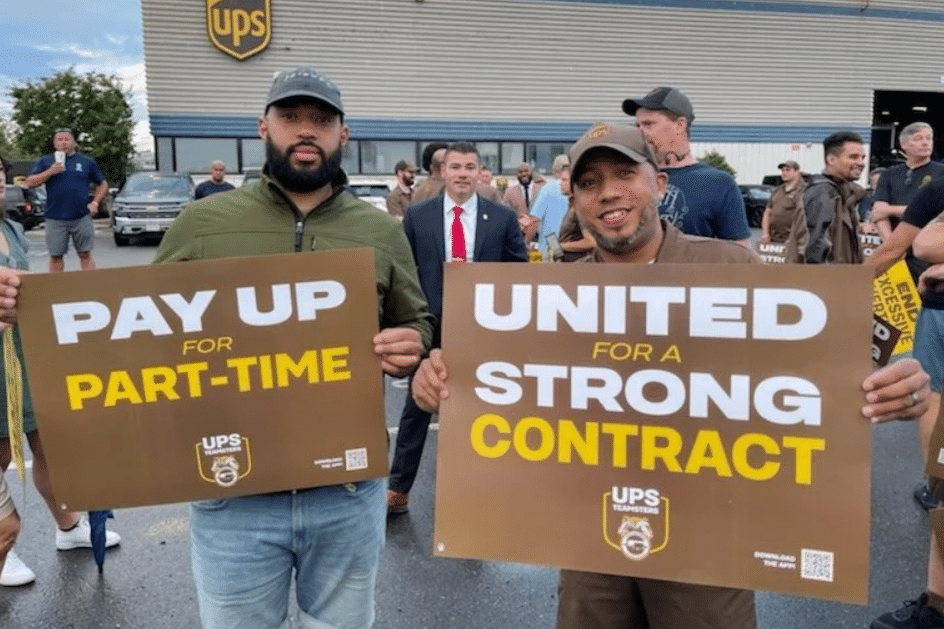In the shipping industry, relationships with unions are not as common as they were in past decades, but we still see their presence in a major way in the recent news with Amazon and–more recently–with the long-standing connection between Teamsters and the United Parcel Service. With contract negotiations beginning between the union and UPS, many in the industry and union itself question whether the parcel shipper will play ball or if tensions will rise and lead to the largest industry strike since 1997.
The New UPS & Teamsters Agreement
Founded in 1903, Teamsters (also known as International Brotherhood of Teamsters) has represented workers across industries, with UPS being the only substantial unionized parcel shipper employing their members today. In the past five years, the number of Teamsters union members that UPS employs has grown from 260,000 to 340,000, which works out to roughly 20% of their total employees and making it the largest private-sector contract in the country.
Every five years, the agreement between Teamsters and UPS expires and goes back into renegotiation, and that falls at the end of July 2023. Their previous contract was signed prior to the COVID-19 pandemic, so the union’s goal with this latest agreement is to have the shipping giant share their billions of pandemic profits with their workers.
While no one can predict whether negotiations will go smoothly or lead to a strike, we can look back to previous agreements for more insights. In June of 2018, UPS just barely avoided a Teamsters strike by signing a tentative, five-year agreement with the union after the overwhelming majority of employees voted to authorize a strike should their terms not be met. Now that this agreement is reaching its end, Teamsters is yet again making it clear to UPS that they intend to demand the strongest possible contract this time around.
What the Teamsters Union Wants
According to the Teamsters official press release, the union saw UPS workers working six and seven-day workweeks throughout the pandemic once they were deemed essential workers, something that hasn’t slowed down thanks to the continued popularity of ecommerce. Their main agreement points include:
- Better pay for both full- and part-time workers
- More full-time opportunities
- The end of forced overtime and corporate harassment
- Increased protection from heat and other workplace hazards
- & an elimination of the two-tier wage system currently in place.
In addition to these terms, Teamsters has also voiced their desire for an agreement to be in place the day after their current agreement expires, August 1st. If a signed contract isn’t in place by then, the union plans for all 340,000 members to strike.
What You Can Do if UPS Teamsters Strike
While negotiations kicked off on April 17th, the biggest questions still looming over the shipping industry are what the immediate future looks like and what shippers can do to prepare for a possible strike. With Teamsters members making up a significant portion of UPS employees, a strike could lead to hundreds of millions in losses for the shipping giant, depending on how long it lasts, and incredible delays across the board, even with FedEx, USPS, and other regional shippers.
Even with these potential challenges, it’s important to remember that a strike seems unlikely at this point, given the success of negotiations between Teamsters and UPS over the past twenty years and the amount of time both parties are dedicating to negotiate prior to the expiration of the existing contract. Still, shippers should take a proactive approach and always have a plan in place should something like a strike, or even a pandemic-related disturbance, ever develop.
Turn to Other Parcel Shippers
We’ve discussed diversifying your carrier mix for the sake of saving on your shipping costs, but it’s also an ideal solution during a major worker strike. Should Teamsters union members strike in the upcoming Summer or Fall, shippers will likely see UPS scramble to keep up with both extensive delays and a massive drop-off in their volume as shippers preemptively move business over to other parcel companies.
While FedEx is the obvious first choice for your more timely shipping needs, it’s important to remember that everyone else in the industry will be looking at FedEx the same way. Rather than shifting over to the other shipping giant entirely, consider looking into regional and special service providers, like last-mile and freight companies.
The recommendation to diversify your mix of parcel carriers is nothing new, but it’s an essential topic for discussion in the wake of an uncertain future between Teamsters and UPS. Whether you have a contingency plan or not, putting something together now can give you the security to prepare for a strike later this year, or in the far future when the next Teamsters agreement goes up for renegotiation.
The Reveel App uses AI and machine learning to provide an unparalleled look into what’s impacting your bottom line. Through invoice audits, AI and Machine Learning technology, and rate modeling/simulations, you can see the health of your operation and assess pricing changes from parcel carriers like FedEx and UPS. Get a demo of Reveel to see how you can leverage automation to synthesize your data, ship more for less, and reduce the time needed to identify issues and action items.




